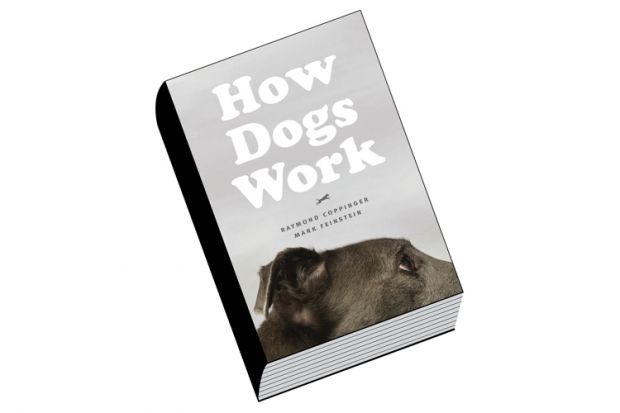From lapdogs to guard dogs, canine companions have long been the objects of our affection and interest. As biologist Raymond Coppinger and cognitive scientist Mark Feinstein explore here, our efforts to broaden the scientific understanding of “how dogs work” makes them a source of intrigue too.
In a complement to existing science-informed books on the subject, Coppinger and Feinstein bring the concept of dog behaviour neatly to the forefront. While we already have a fairly firm grasp on the physical inner workings of canines, How Dogs Work focuses more on the differences brought about by breed traits, and makes comparisons between dogs and an array of wild canid species, including jackals and dingoes.
The authors begin by outlining the workings of the dog in a mechanistic way, loosely comparing them with machines. They go on to consider how this notion may help in understanding and unravelling the behavioural complexities of the dog, highlighting recent thinking that has moved us on from the long-held idea of dogs as some form of “modern wolf”, both in terms of behavioural differences and adaptive responses to very different environments.
Aimed at both lay and specialist reader, what really sets How Dogs Work apart is a host of anecdotes by Coppinger that provide compelling real-life context. Throughout the book, he draws on his experience of owning and competing with sled dogs as well as his expertise with a range of other working dogs. Exploring sled dog shape and its “optimum conformation” is a novel approach, and the authors refine the concept down to a mathematical equation based on round dogs and square dogs (although not literally). “Behavioural shape”, they argue, is key to why a dog “does what it does”. The “chase” behaviour in a border collie, for example, is selectively bred to improve herding behaviour when working sheep, just as “freeze” and “point” behaviours are useful in gundog breeds.
Coppinger and Feinstein spend some time discussing the research that has served as building blocks in our current perspective on behaviour, and in particular (in something of a Who’s Who of fundamental behaviour) the work of Konrad Lorenz and Nikolaas Tinbergen. At times, however, the more novel and interesting ideas that they raise are left to drift, as the authors focus more on the older literature than current research. Additionally, some of the material here will be familiar to those who have read Coppinger’s previous books. Although the book’s bibliography will be useful for curious readers new to the subject and looking to broaden their knowledge, in some chapters it is a little sparse.
How Dogs Work concludes by suggesting that, perhaps unsurprisingly, there is no simple or indeed single answer as to “how dogs work”; instead, the authors point to clear differences in breed traits and the complex interplay between intrinsic responses, selection of traits and learning. While behaviours can be learned and modified, which they neatly liken to turning switches on and off, Coppinger and Feinstein’s focus on “pre-programmed” innate behaviours provides a fascinating look at ongoing research for the general reader, and a valuable aid for anyone interacting with dogs in working environments.
Anne Carter is senior lecturer in animal biology, Nottingham Trent University.
How Dogs Work
By Raymond Coppinger and Mark Feinstein
University of Chicago Press, 224pp, £18.00
ISBN 9780226128139 and 6322704 (e-book)
Published 22 October 2015




